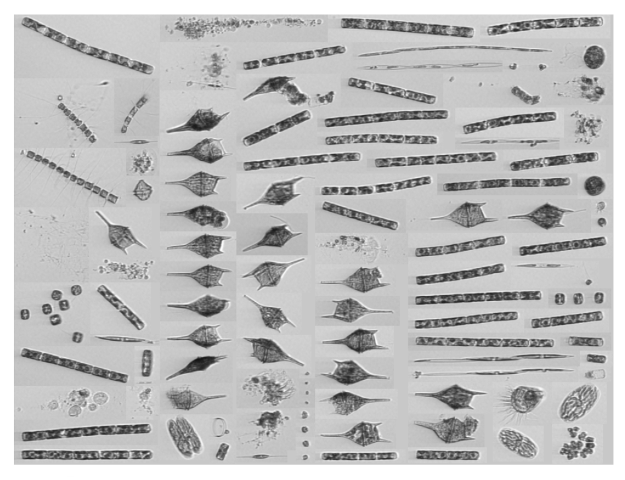Posts Tagged ‘NES-LTER’
Historic, Continuing Collaboration
The U.S. National Science Foundation Ocean Observatories Initiative (NSF-OOI) and the Northeast U.S. Shelf (NES) Long-Term Ecological Research (LTER) project have been collaborating since 2017, when the original OOI Coastal Pioneer Array was deployed 75 nautical miles off the coast of Martha’s Vineyard. Representatives from the NES-LTER project would join the Pioneer Deployment and Recovery expeditions in this region for their spring and fall seasonal cruise. Their work includes deploying an Imaging FlowCytobot (IFCB) to sample continuously from the ship’s underway science seawater while OOI cruises were underway.
An IFCB is an in-situ automated submersible flow cytometer that generates images of particles taken from the aquatic environment. Designed and built by researchers at Woods Hole Oceanographic Institution (WHOI), the IFCB has since become commercially available through McLane Research Laboratories.
“IFCB enables us to study the phytoplankton and microzooplankton inhabitants of a given region. We can see what plankton are present over time and how the community structure adjusts to changes in the ecosystem,” explained Taylor Crockford, a WHOI researcher who regularly deploys IFCBs. “NES-LTER conducts four seasonal cross-shelf surveys per year studying the food web and physical properties of the surface waters and water column from near shore to the shelf-slope break, which includes the location of the original Pioneer Array. Now that the Pioneer Array is moving south, we are excited to have the opportunity to continue this collaboration and build upon our understanding of the planktonic communities in the region.”
[media-caption path="https://oceanobservatories.org/wp-content/uploads/2024/04/Cytobot-image.png" link="#"]A glimpse at the diverse plankton community IFCB is currently seeing today (April 2, 2024) during the transit south to the new MAB Pioneer location. Credit: Taylor Crockford © WHOI. [/media-caption]During the initial deployment of the Coastal Pioneer Array at the Mid-Atlantic Bight (MAB), this collaboration continues. Crockford is aboard the R/V Neil Armstrong and using an IFCB to collect data as part of the project’s broadscale study region (ongoing since 2013) while the ship transits to and from the new deployment site off the coast of Cape Hatteras, NC.
When the ship and team arrive at Pioneer’s new location, she will be lending her expertise to the deployment team for it is the first time a Plankton Imaging System (PLIMS) is being deployed on one of Pioneer’s Central Surface Moorings. This new deployment is an outcome of community input during an NSF and Ocean Observatories Initiative Facility Board sponsored workshop in 2021.
Read More

